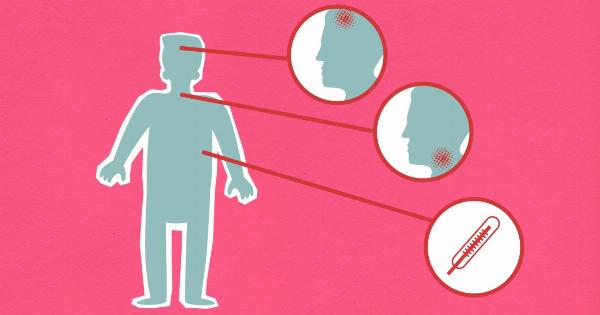Ovarian cancer is one of the most deadly cancers that affect women worldwide. It is often referred to as the “silent killer” because it can go undetected until it has reached advanced stages.
The difficulty in diagnosing ovarian cancer lies in the fact that its symptoms are often nonspecific and can easily be mistaken for other less serious conditions. However, being aware of the signs and symptoms associated with ovarian cancer is crucial in its early detection and successful treatment.
Understanding Ovarian Cancer
Ovarian cancer develops when abnormal cells in the ovaries grow and multiply uncontrollably, forming a tumor.
The ovaries are two small almond-shaped organs located on either side of the uterus, and they produce and release eggs as part of the menstrual cycle. When cancerous cells begin to form in the ovaries, it can have a significant impact on a woman’s health.
There are several types of ovarian cancer, including epithelial tumors (which originate in the cells that cover the surface of the ovaries), germ cell tumors (which develop from the cells that produce eggs), and stromal tumors (which form in the hormone-producing cells of the ovaries). Each type has its own distinct characteristics and treatment options.
The Elusiveness of Symptoms
What makes ovarian cancer particularly challenging is the elusiveness of its symptoms. In the early stages of the disease, they are often vague and can be easily attributed to other common conditions.
Women may experience abdominal or pelvic discomfort, bloating, changes in bowel habits, loss of appetite, and increased urinary urgency. These symptoms are often dismissed as signs of gastrointestinal issues or normal hormonal fluctuations.
As the cancer progresses, additional symptoms may manifest, such as persistent pain in the abdomen or pelvis, unexplained weight loss, fatigue, and changes in menstrual cycles.
By this point, the cancer has often spread beyond the ovaries, making treatment more challenging and reducing the chances of survival.
Recognizing the Red Flags
While ovarian cancer can be challenging to detect, it is not impossible. Recognizing the red flags and listening to your body can make a significant difference in early detection and improved outcomes.
Additionally, there are certain risk factors that can increase a woman’s chances of developing ovarian cancer.
Common Risk Factors
Some of the common risk factors for ovarian cancer include:.
- A family history of ovarian cancer or breast cancer
- A personal history of breast, colorectal, or endometrial cancer
- Advanced age, with the majority of cases occurring in women over 50
- Genetic mutations, such as BRCA1 and BRCA2
- Never having been pregnant
- Early onset of menstruation or late onset of menopause
If you have one or more of these risk factors and experience any of the aforementioned symptoms, it is essential to consult with a healthcare professional to evaluate your situation further.
Diagnostic tools for Ovarian Cancer
When ovarian cancer is suspected, there are various diagnostic tools that can be used to confirm the presence of the disease. These may include:.
- Transvaginal ultrasound: This imaging test uses sound waves to produce images of the ovaries and can help identify any abnormalities or tumors.
- CA-125 blood test: CA-125 is a protein that is often elevated in women with ovarian cancer. However, it is important to note that CA-125 levels can also be elevated due to other conditions, such as endometriosis or pelvic inflammatory disease.
- Biopsy: A biopsy involves the collection of tissue samples for further analysis. It is the most definitive way to confirm a diagnosis of ovarian cancer.
- Exploratory surgery: In some cases, surgery may be necessary to visualize the ovaries and surrounding areas more closely and obtain tissue samples for analysis.
Each diagnostic tool has its own limitations, and a combination of tests may be necessary to arrive at an accurate diagnosis.
The Importance of Early Detection
Early detection of ovarian cancer significantly increases the chances of successful treatment and long-term survival.
Unfortunately, due to the lack of specific symptoms and effective screening methods, the majority of cases are diagnosed in later stages when the cancer has already spread beyond the ovaries.
Therefore, it is crucial for women to be proactive in their healthcare and advocate for their well-being.
Regular visits to healthcare professionals, especially for those at higher risk, can help monitor for any worrisome developments and provide an opportunity for early intervention.
Conclusion
Ovarian cancer may be an elusive disease, but it is not insurmountable.
By understanding the signs and symptoms associated with ovarian cancer and acknowledging your personal risk factors, you can take active steps towards early detection and improved prognosis. Remember to listen to your body, consult with healthcare professionals regularly, and be an advocate for your own well-being.




























